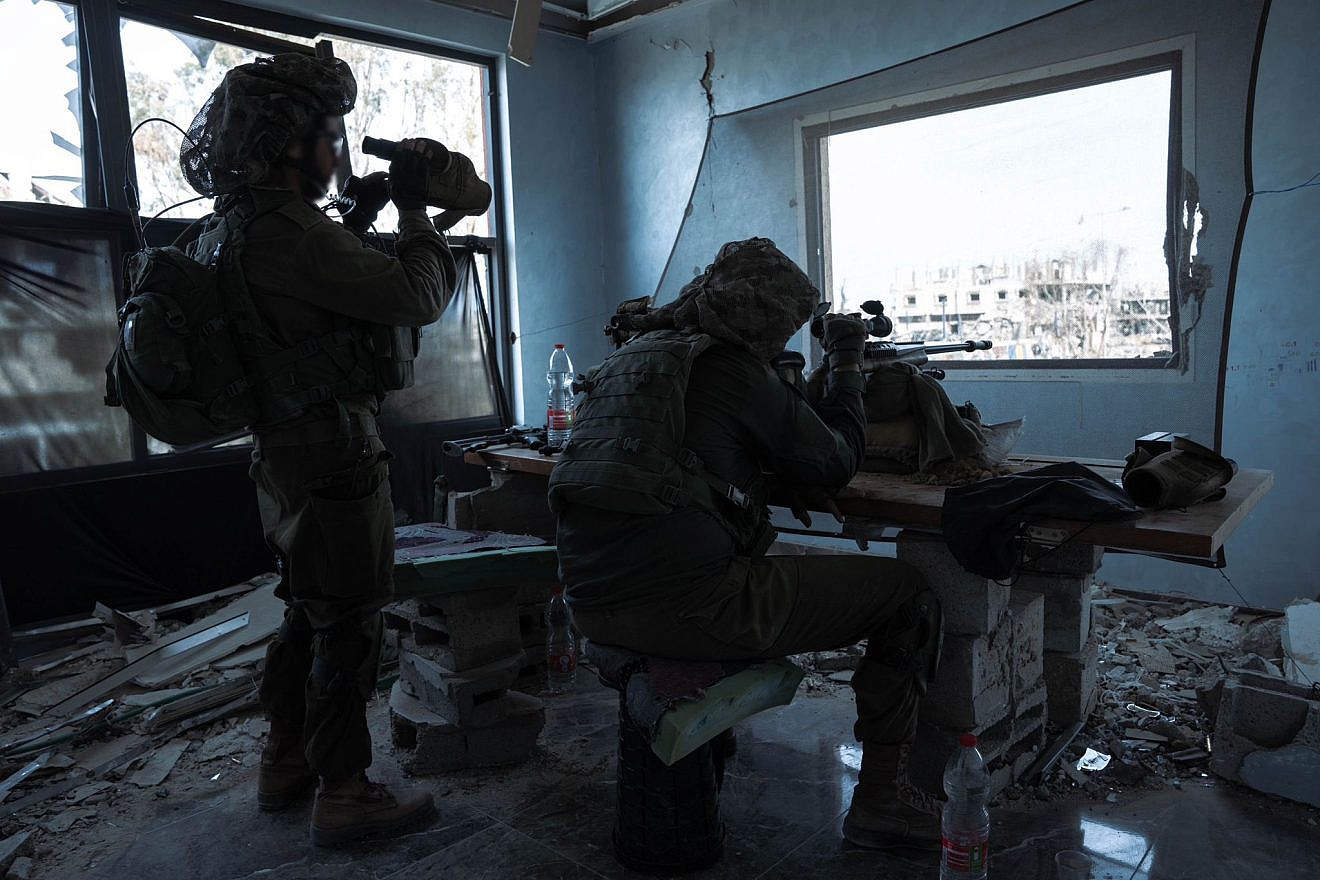The Israel Defense Forces is making great efforts to limit civilian casualties in its war against Hamas, despite the terror group’s core strategy of embedding itself in the heart of civilian areas and sites.
According to a senior IDF official, the military’s approach is comprehensive, integrating advanced technologies, strategic planning and international humanitarian law.
Central to this strategy is the use of a sophisticated control center in the IDF Southern Command to monitor and evaluate the situation in Gaza in real time. The system divides Gaza into 623 blocks, or polygons, each featuring detailed data on civilian presence, in a continuously updating smart map.
The information is made available to air, ground and naval units, and can have a decisive influence on the IDF’s actions.
No less importantly, the source said, this information is crucial for controlling and analyzing the evacuation of Gazan civilians and understanding the distribution of the Strip’s civilian population.
The control center primarily serves a humanitarian purpose, and is designed to enable IDF commanders, before launching any kind of strike or maneuver, to evaluate how “clean” a given sector is.
According to the official’s assessment, over 5,000 terrorists have been killed in Gaza since Oct. 7, while the civilian death toll may be as high as 10,000, which would mean a combatant to civilian casualty ratio of 2:1.
“The IDF puts a lot of effort in … to make sure that civilians won’t be on the battlefield. Unfortunately, we are facing an enemy whose core strategy is to do exactly the opposite. While we are trying to do everything in our power… like evacuating the civilian population from the battlefield to safer areas, what Hamas actually does is counter our efforts by putting [up] roadblocks, and [employing] other means” to keep them from leaving, said the source.
The IDF has been able to evacuate over a million people from northern Gaza, including 850,000 from Gaza City and nearly the entire population of areas like Shejaiya.
In southern Gaza, it has sent local evacuation orders with which some 400,000 Gazans have complied, and has encouraged civilians to move into “humanitarian belts” in Al Mawasi, west of Khan Younis and Rafah, according to the source.
To monitor the status of each sector in Gaza, the control center uses a plethora of data, including cell phone data and input from international aid organizations, to feed real-time information into the monitoring systems.
A key aspect of the IDF’s strategy is the issuance of early warnings to civilians in combat zones, the source explained. However, Hamas’s strategy involves the use of civilians as human shields, complicating the IDF’s war efforts. The terror group launches rockets and anti-tank missiles from schools, mosques, hospitals and other such sites.
To counter these efforts, the control room is equipped to communicate not only with various IDF units but also Palestinian civilians, especially concerning evacuations and humanitarian aid coordination.
The IDF’s efforts have also been extensive in terms of infrastructure. For example, the military facilitated the construction of new pipelines in Gaza to ensure water access in areas like Khan Yunis and Dir Al-Balah, according to the official.
Moreover, the military has coordinated the entrance of two field hospitals and the evacuation of injured civilians to these facilities, demonstrating a commitment to addressing the immediate humanitarian needs arising from the conflict.
The IDF’s strategy also extends to the detailed understanding of the Gaza terrain. A number of officers in the control room are well versed in the local geography, enabling precise and informed decision-making.
Still, the challenges of conducting warfare in such a densely populated area remain formidable.
As the IDF focuses on the next stage of its ground offensive in southern Gaza, its approach to minimizing civilian casualties in Gaza will continue to be marked by a combination of technological sophistication, strategic evacuation planning, close monitoring of civilian movements and adherence to international laws.
These efforts reflect a concerted attempt to balance the military imperative of dismantling the Hamas terror army in Gaza against the need to minimize collateral damage as much as possible.


























